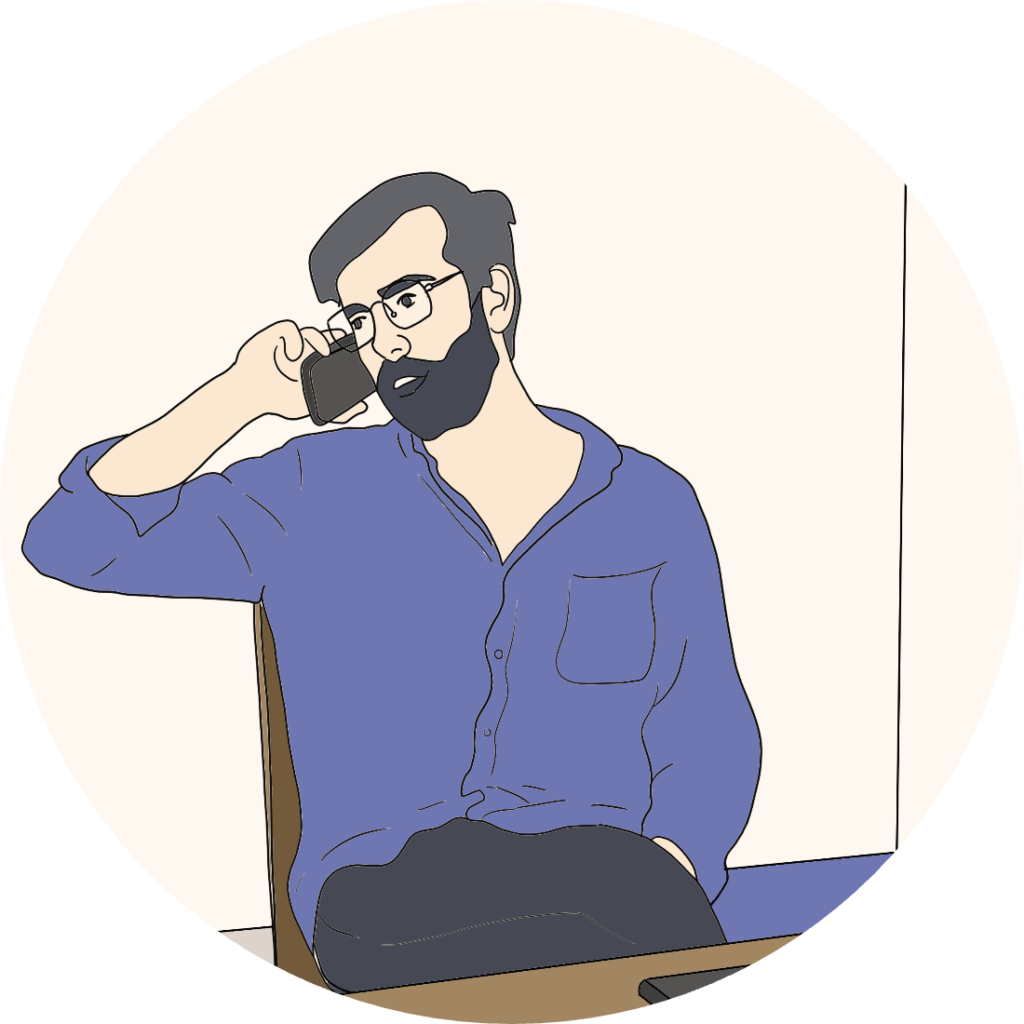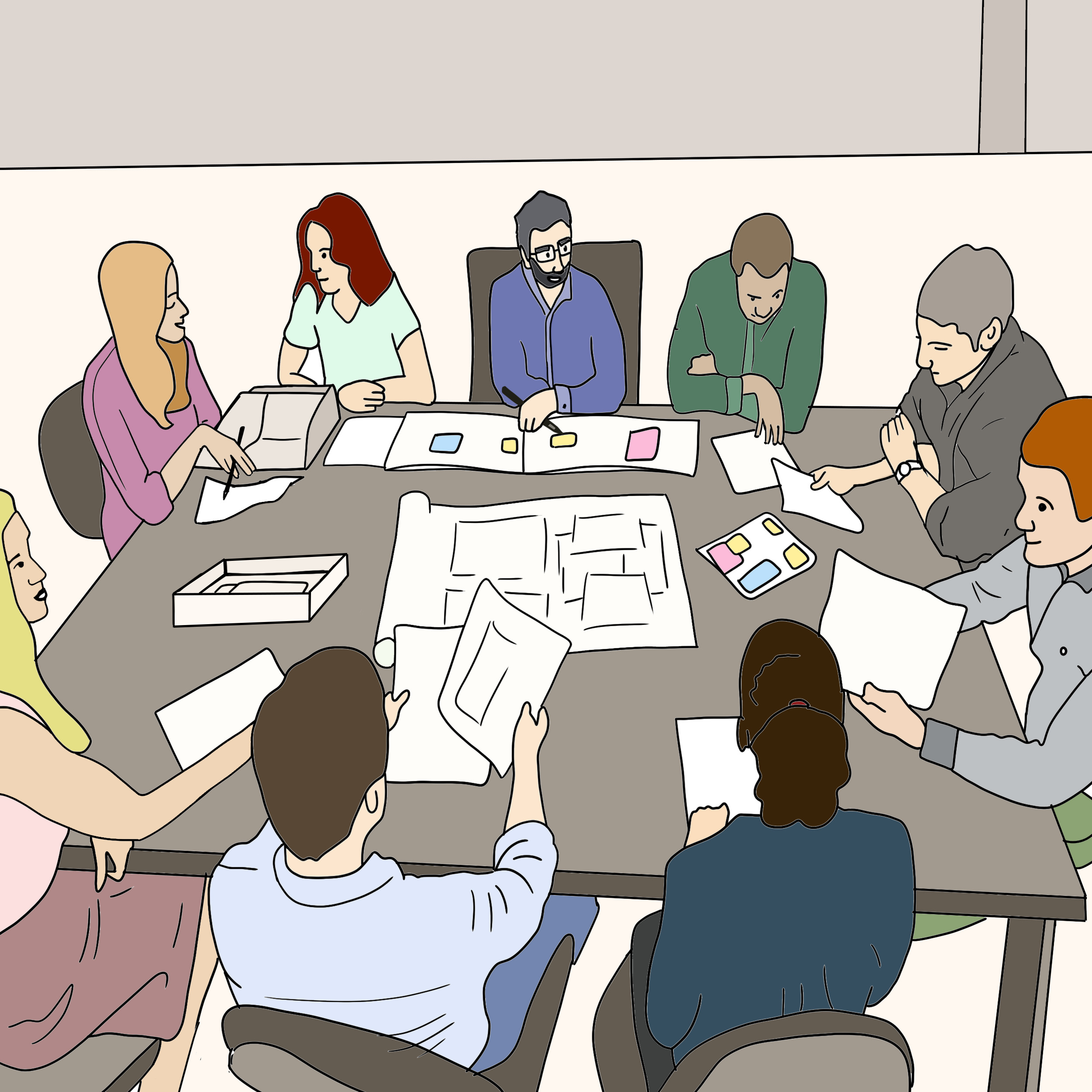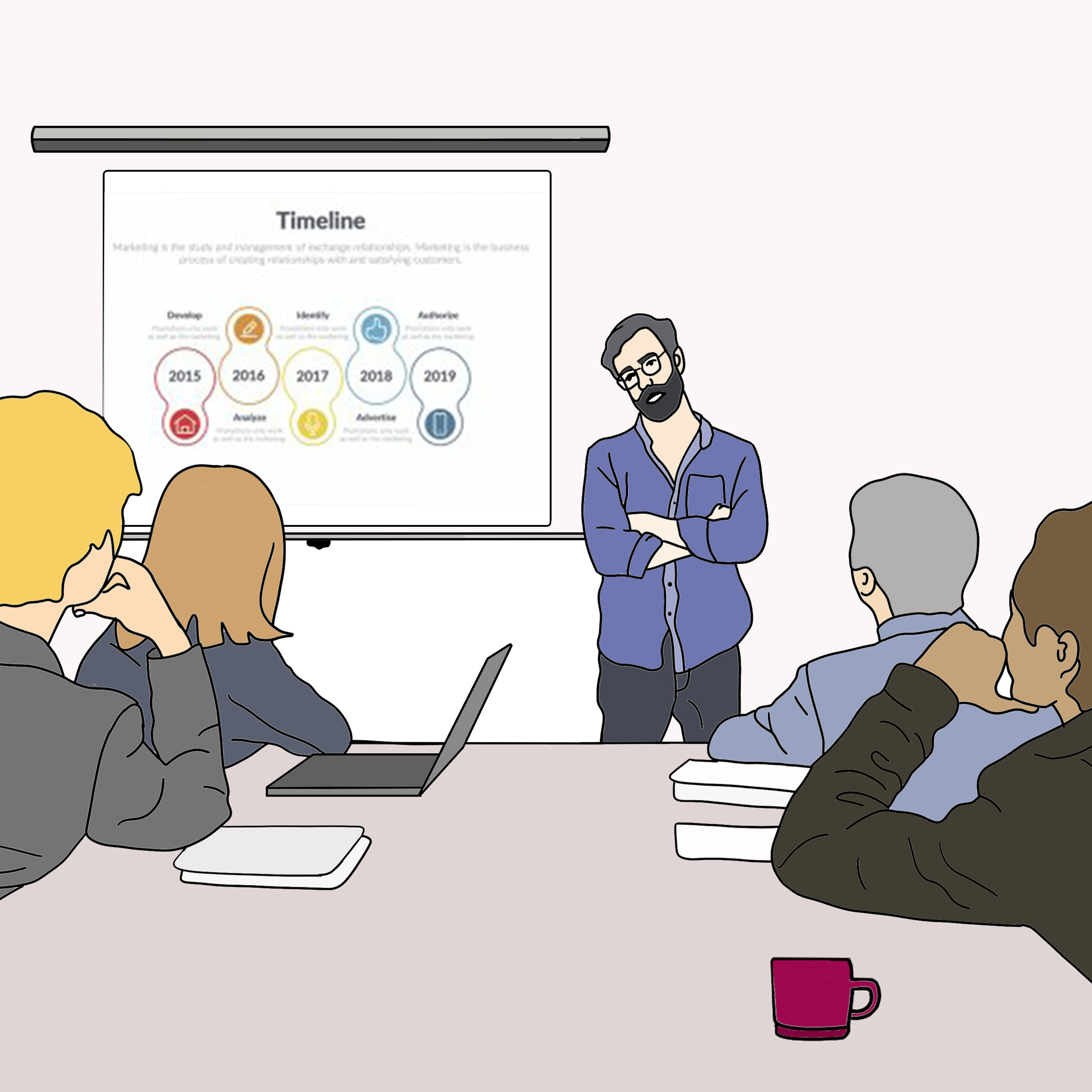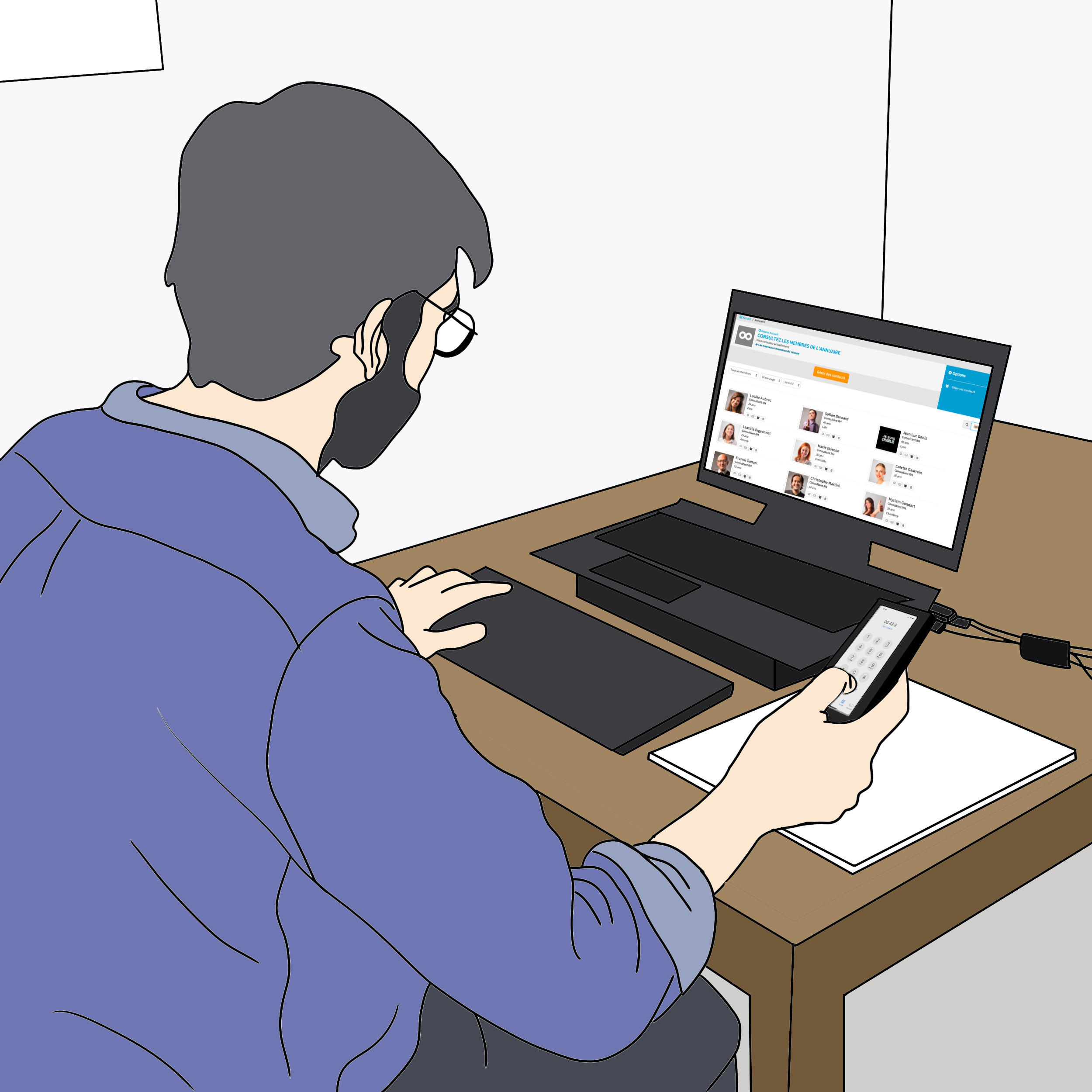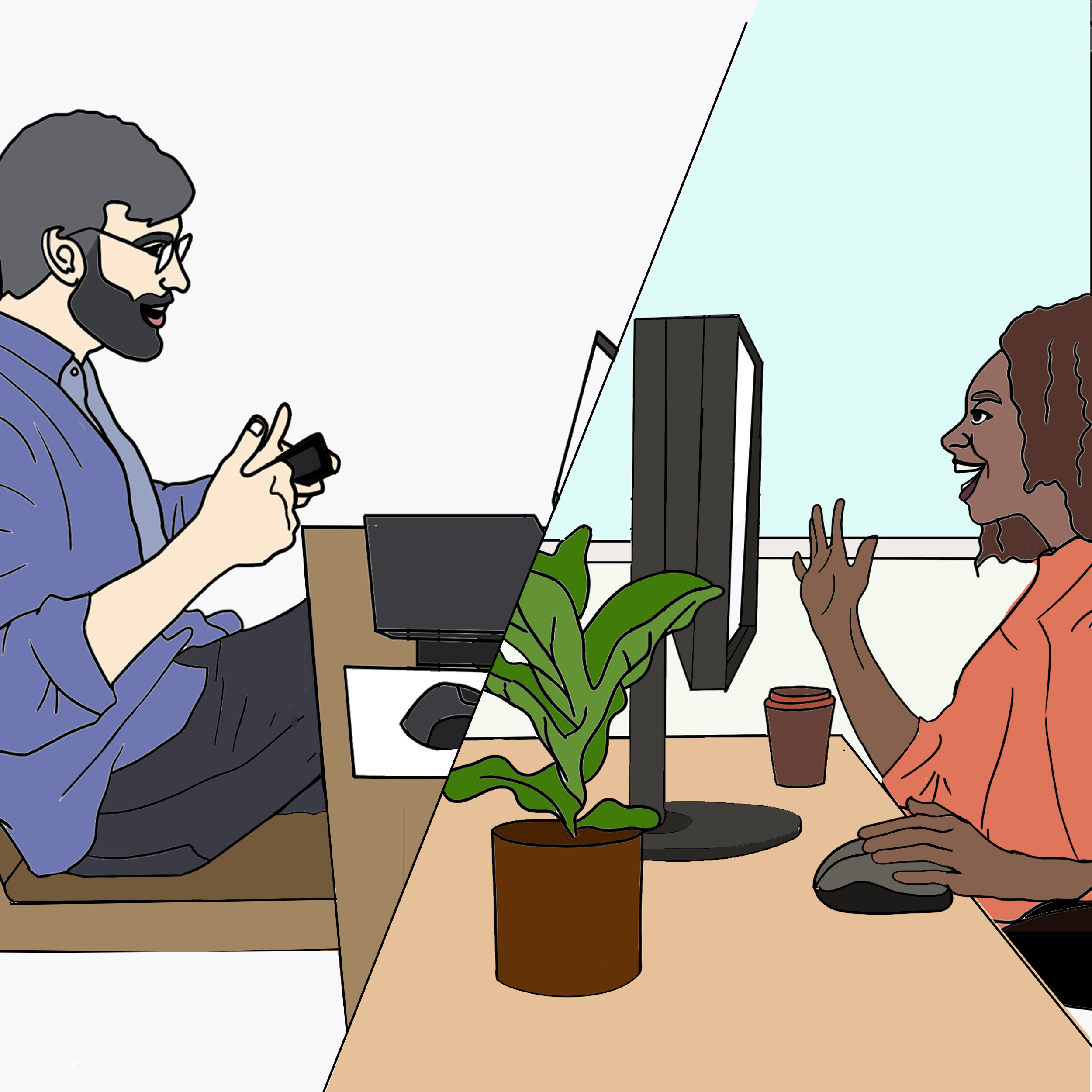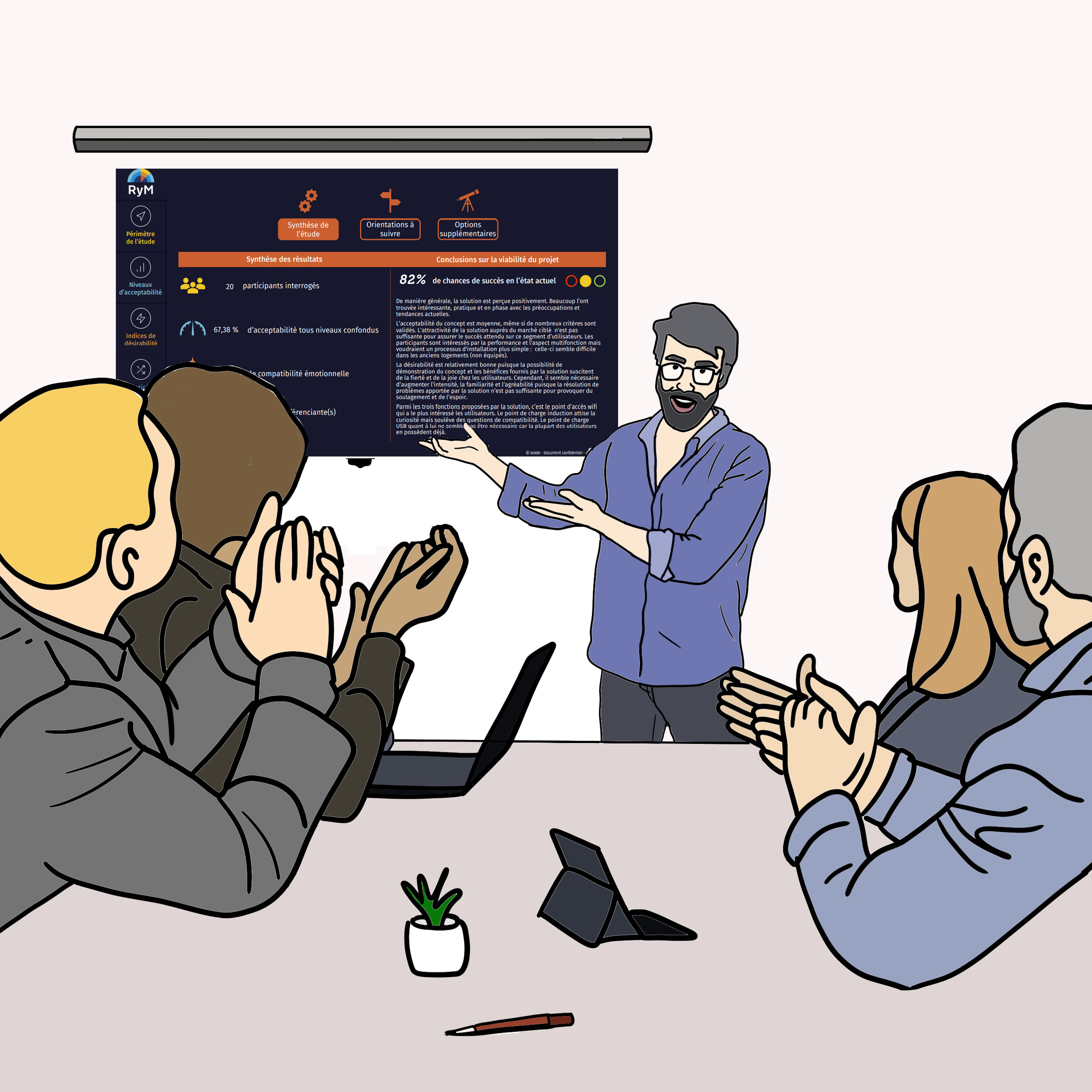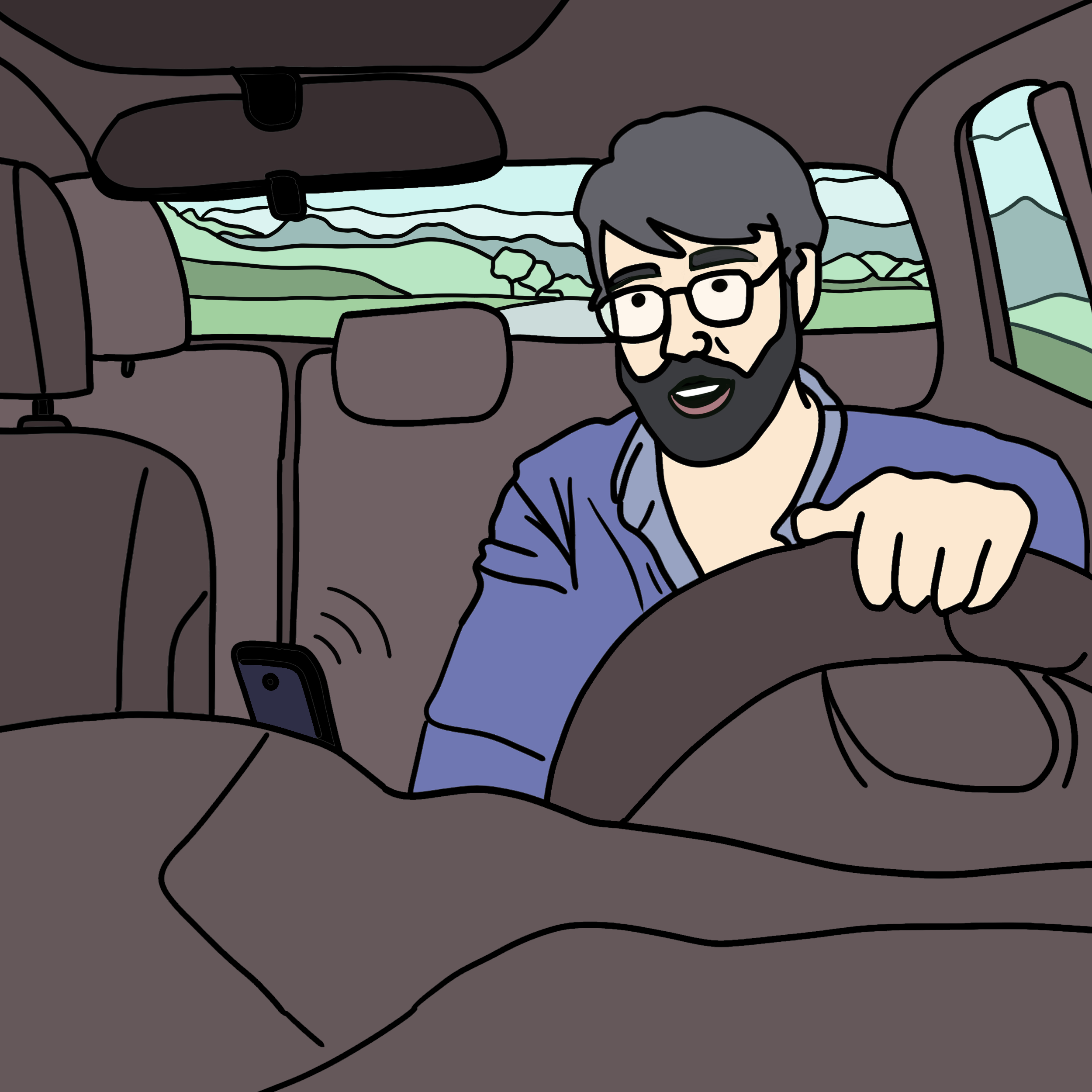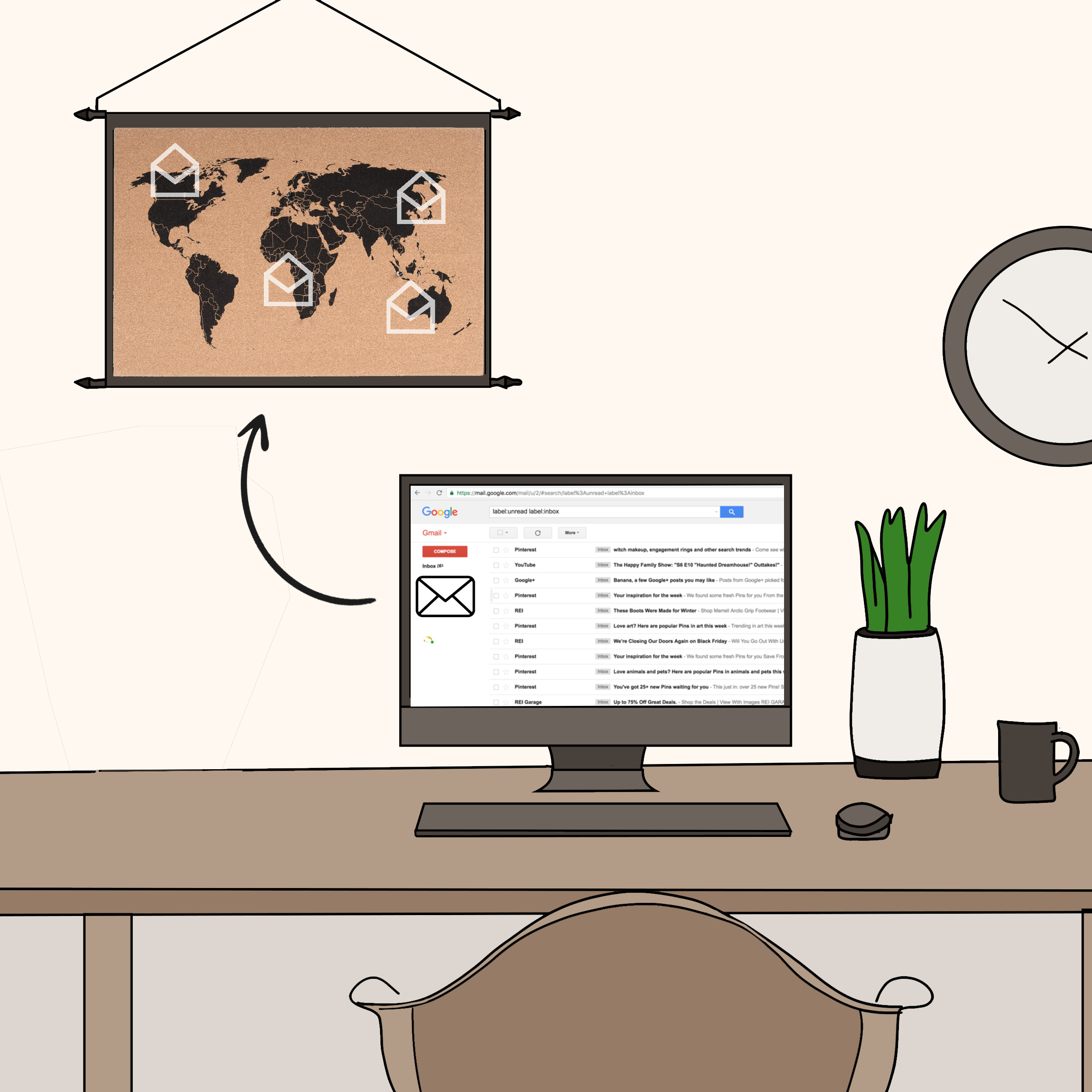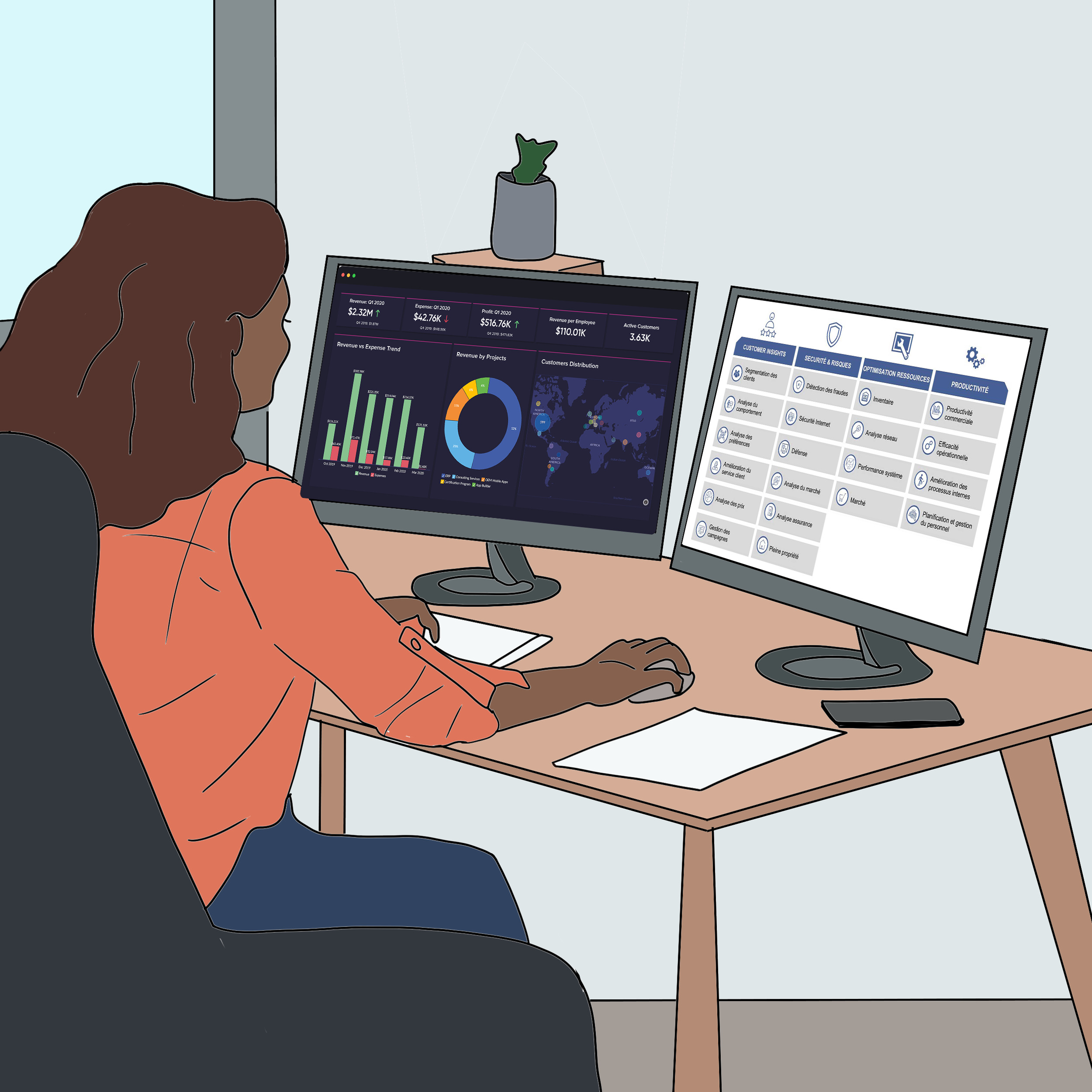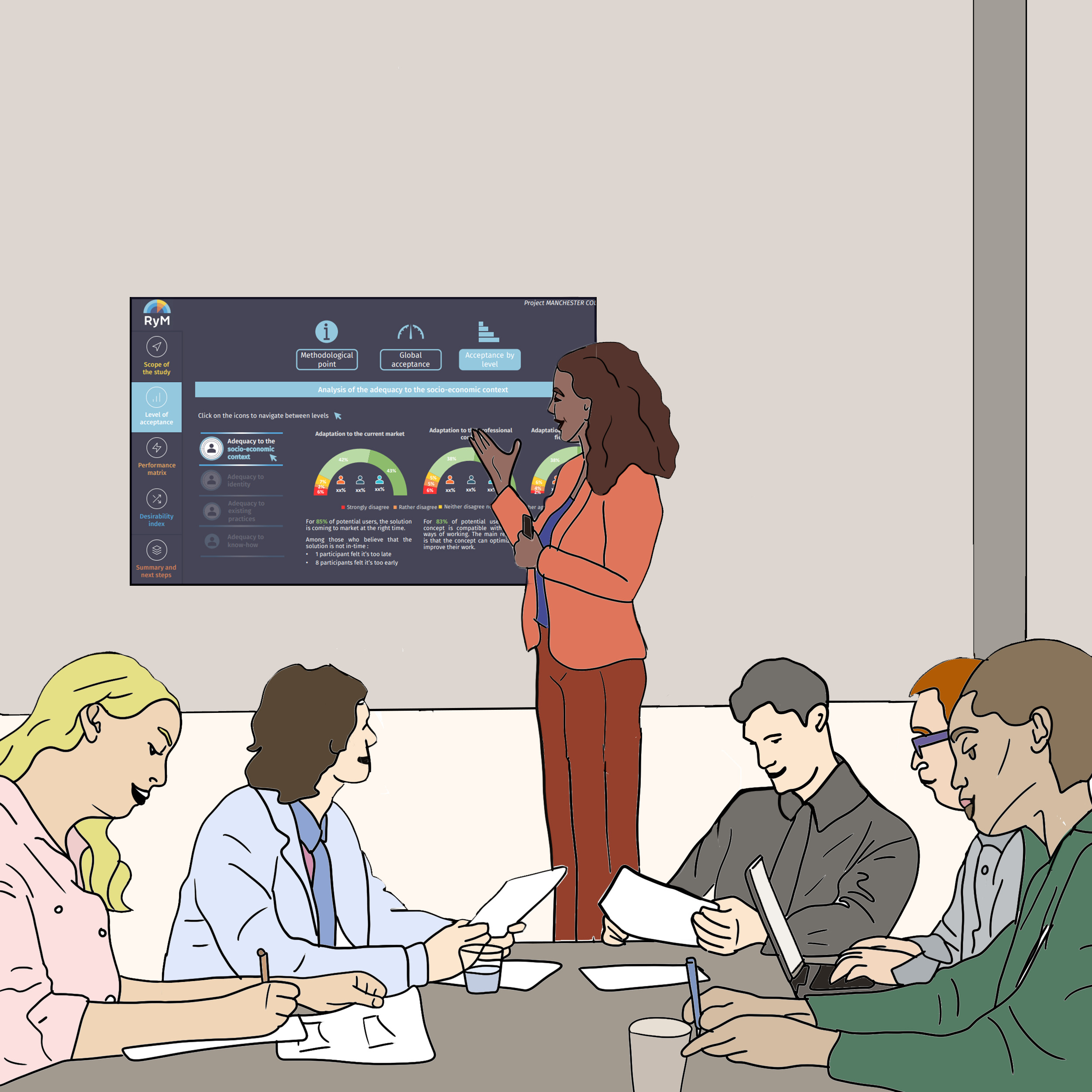RyM - Nos services en histoire [EPISODE 4]
Cas d'usage d'un abonnement à des études centrées UX

Découvrez l’histoire de Mathilde, responsable partenariats de la structure d’accompagnement Innotech, qui est à la recherche de solutions pour mener les projets d’innovation de ses adhérents vers le succès.
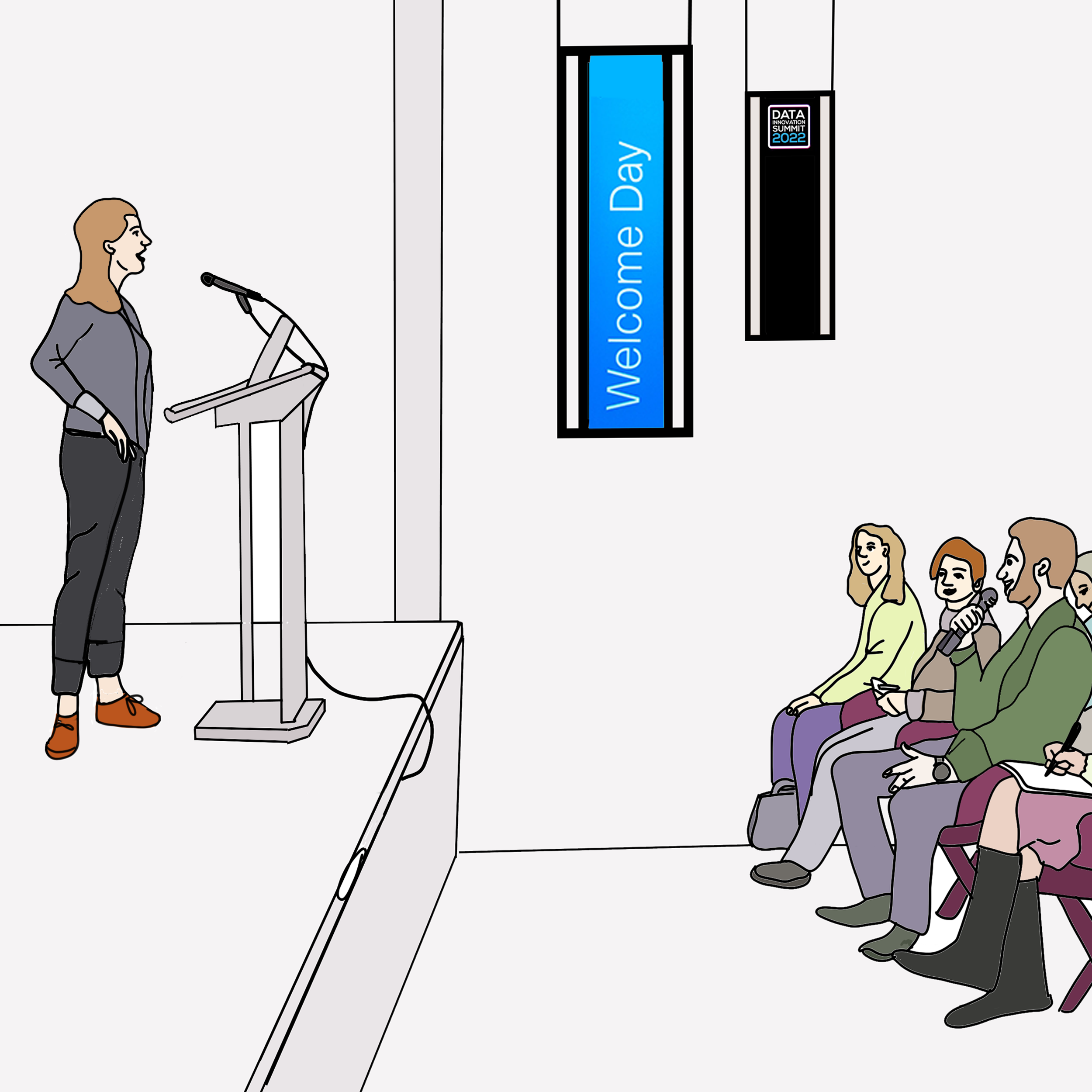
En cette période de rentrée, Innotech organise le
« Welcome Day ». Pour Mathilde, c’est l’occasion de présenter le pôle et d’explorer quels synergies et partenariats peuvent être mis en place avec les nouveaux membres. De nombreuses entreprises innovantes et structures de conseil sont présentes, dont Reach your Market (RyM), une agence d’accompagnement à l’innovation.
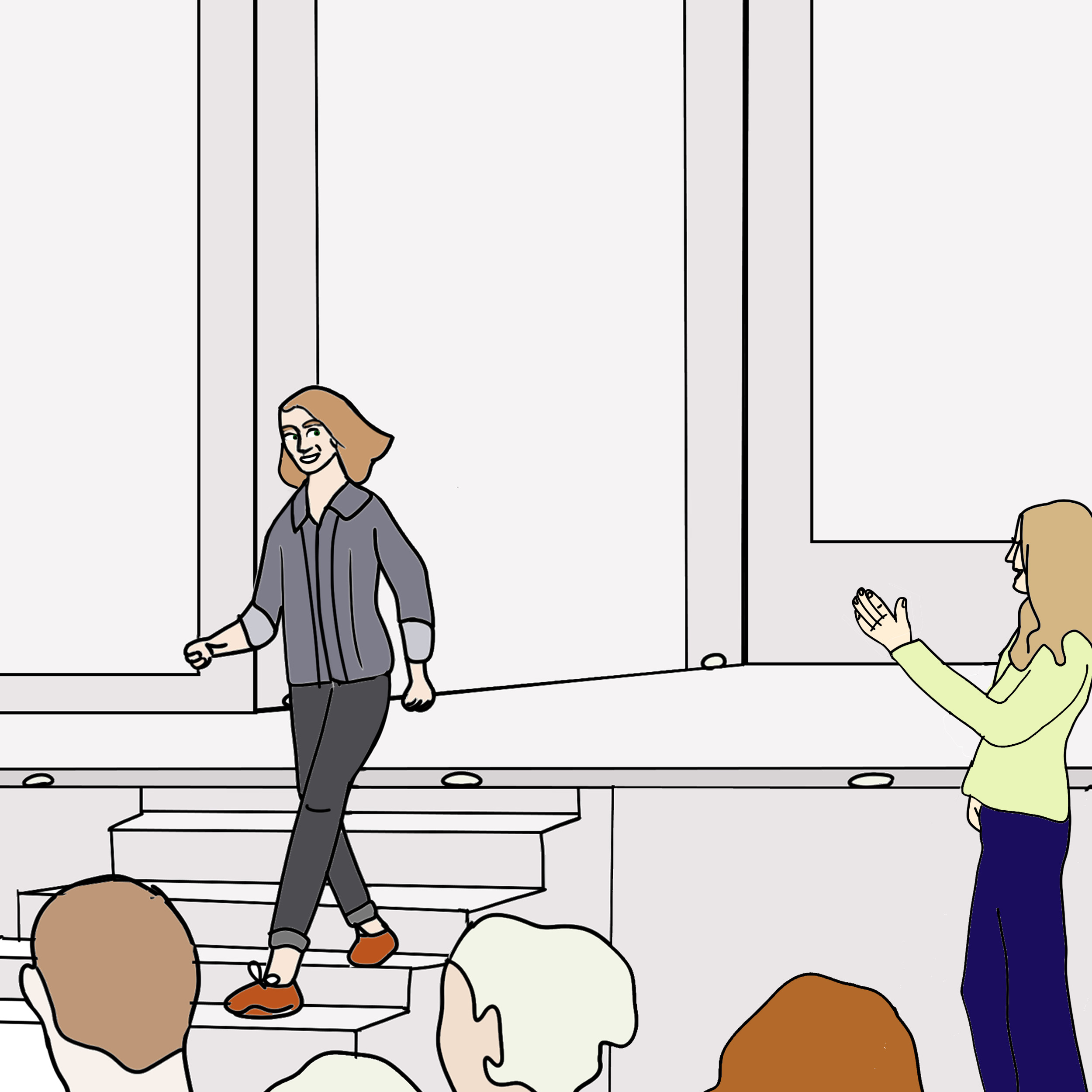
En tant que business developer RyM, Juliette est présente à l’événement. Après la présentation de Mathilde, elle décide d’aller échanger avec elle. Les deux femmes parlent innovation, pièges à éviter, importance des utilisateurs, études… Le courant passe et elles décident de reprendre contact d’ici quelques jours pour creuser les pistes de collaboration possibles.

La semaine suivante, Juliette et Mathilde se rappellent. Entre temps, Mathilde a échangé avec son équipe et propose à Juliette d’initier la collaboration avec un webinaire. Celui-ci sera à destination des membres du pôle et portera sur l’importance des études d’usage pour maximiser les chances de succès des innovations.
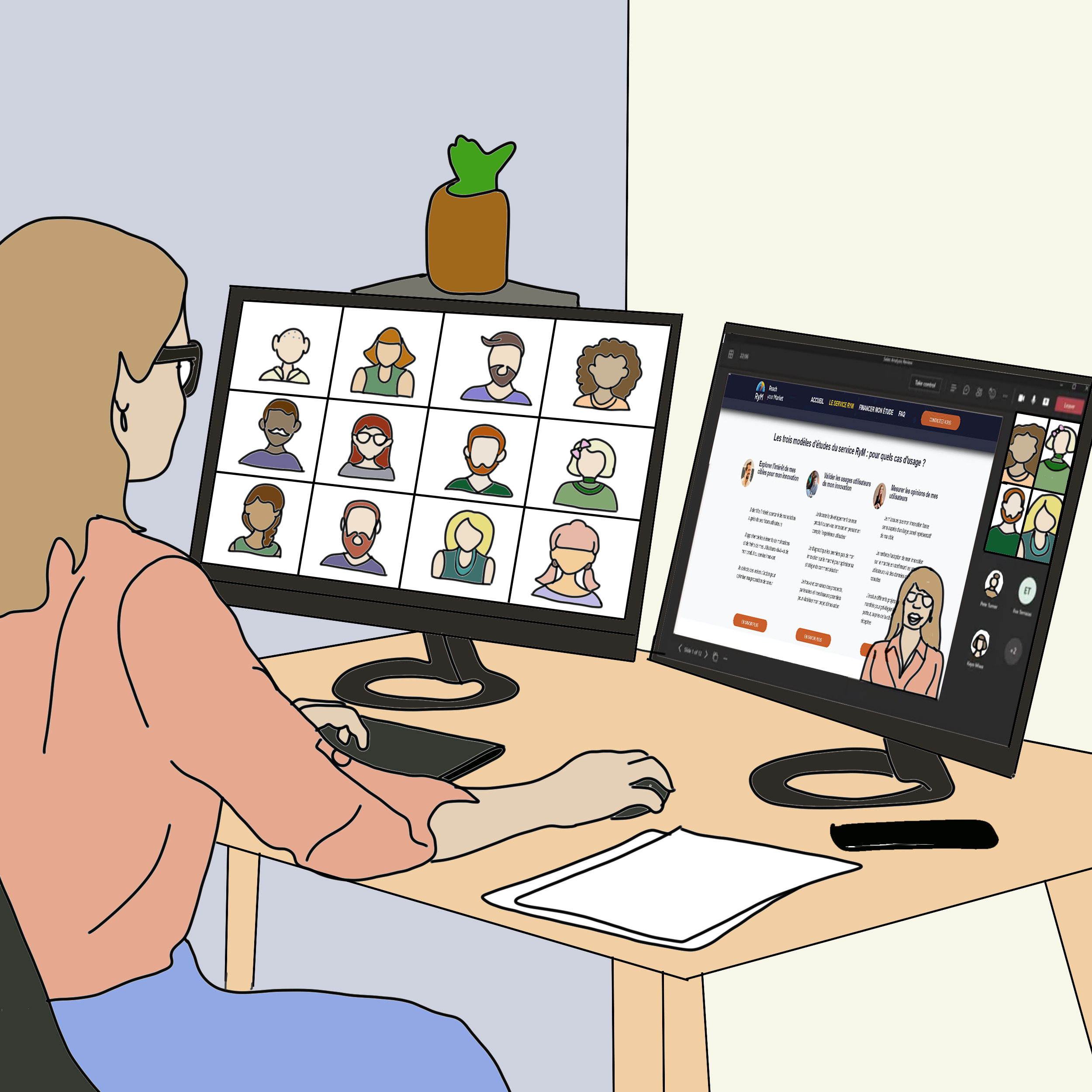
Un mois plus tard, c’est le Jour-J. Deux experts Reach your Market animent le webinaire sur la thématique des études utilisateurs auprès des membres Innotech. Les questions sont nombreuses et les services RyM suscitent l’intérêt des participants.

Suite à l’événement, plusieurs adhérents du pôle se manifestent auprès de Mathilde pour savoir comment bénéficier des solutions RyM dans leurs projets d’innovation. Pour leur répondre, Mathilde reprend contact avec Juliette.
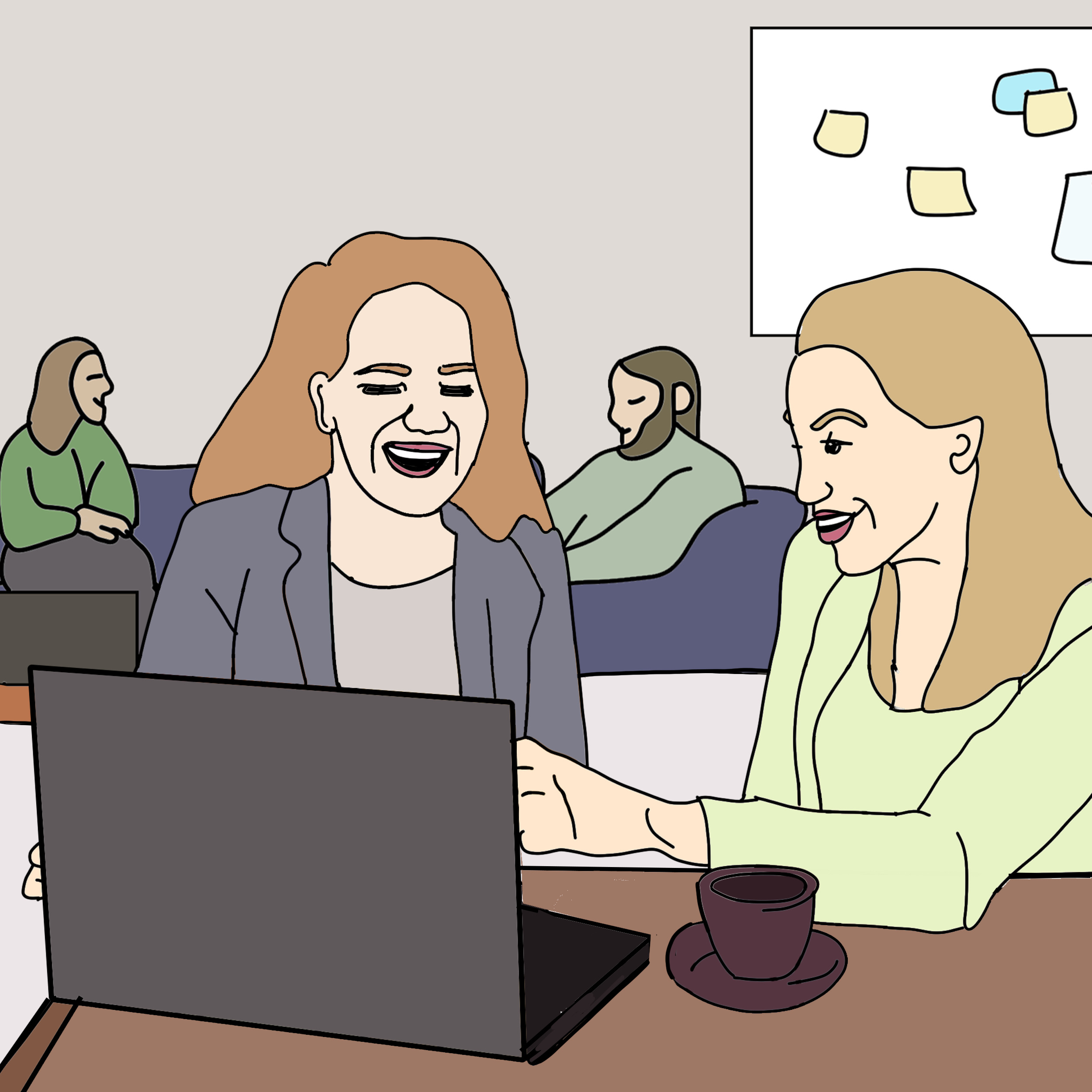
La semaine suivante, Juliette et Mathilde se retrouvent autour d’un café. Sur la base des besoins exprimés, Juliette lui propose différentes formules d’abonnement pour que les adhérents puissent bénéficier d’études « Usage Check » visant à valider la projection à l’usage des utilisateurs.
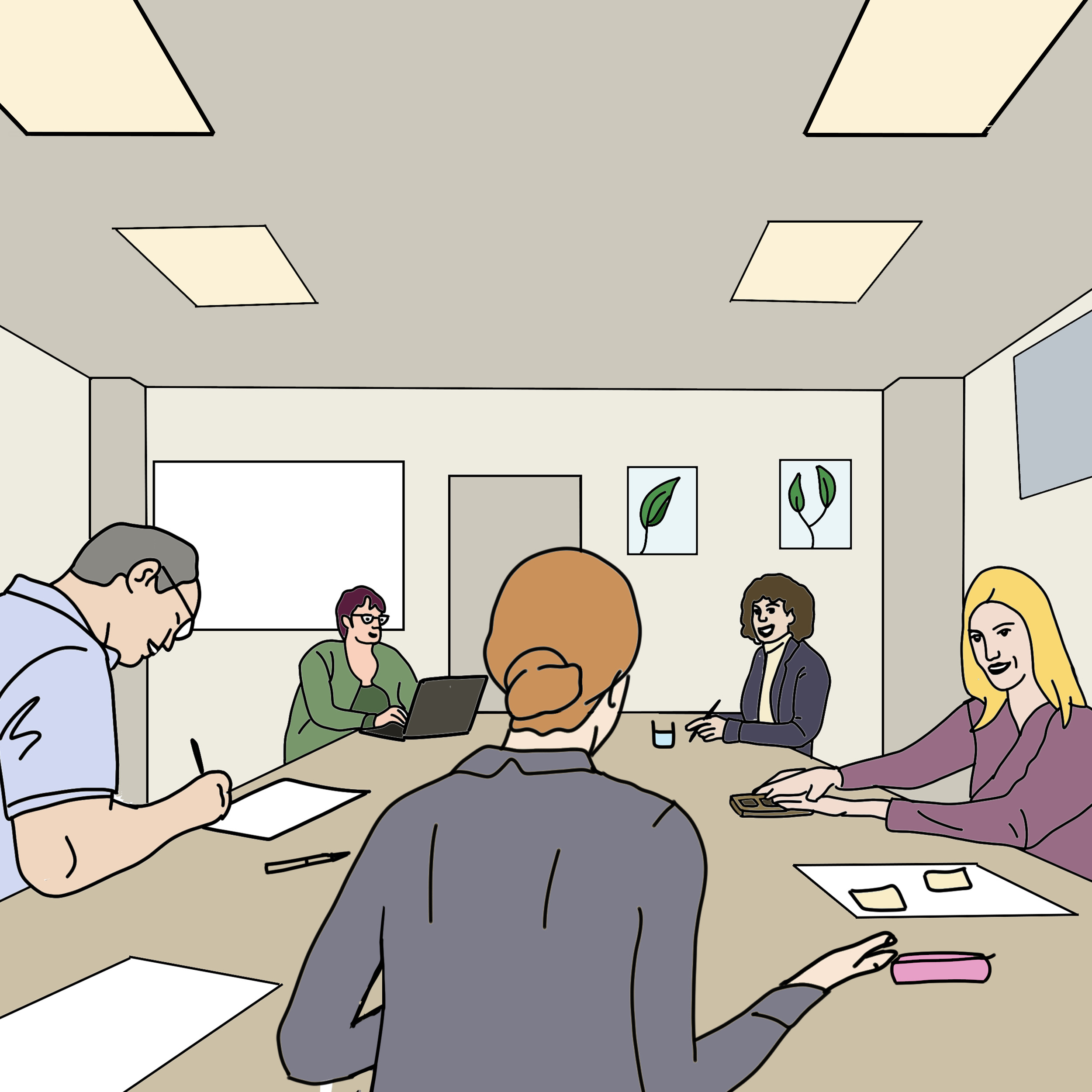
Dans les jours qui suivent, Mathilde profite d’une réunion avec les responsables du pôle pour exposer et discuter de l’offre RyM. Après réflexion, ils s’accordent sur un abonnement de 15 études pour l’année à venir, ce qui leur fera bénéficier d’un tarif avantageux et d’une option d’évaluation du consentement à payer systématiquement offerte.
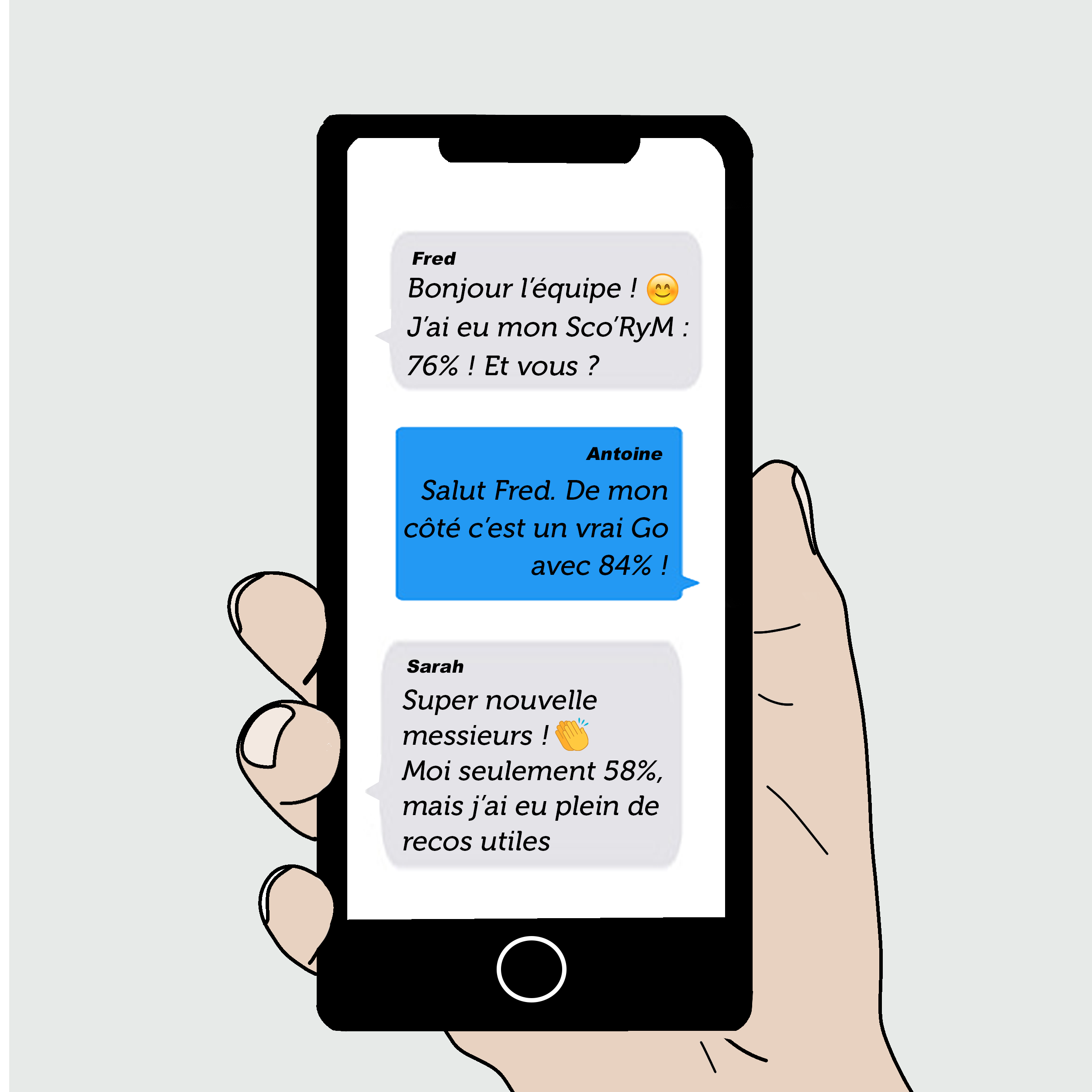
Six mois ont passé et déjà dix études RyM ont été réalisées. Les adhérents sont ravis : ils s’amusent à comparer leur Sco’RyM, l’indicateur des chances de succès de leur innovation. Même s’il est plus faible pour certains, tous sont satisfaits des analyses menées et des recommandations formulées, qui leur seront d’une aide précieuse pour réussir !

A l’issue de l’année écoulée et suite aux retours positifs des adhérents, Mathilde souhaite pérenniser le partenariat avec Reach your Market. Elle renouvelle l’abonnement « Usage Check » avec Juliette et décide d’expérimenter en plus une formule avec des études quantitatives pour diversifier les solutions proposées à ses adhérents.
![RyM – NOS SERVICES EN HISTOIRE [EPISODE 4]](https://www.reach-your-market.com/wp-content/uploads/2022/06/Histoire-4.png)
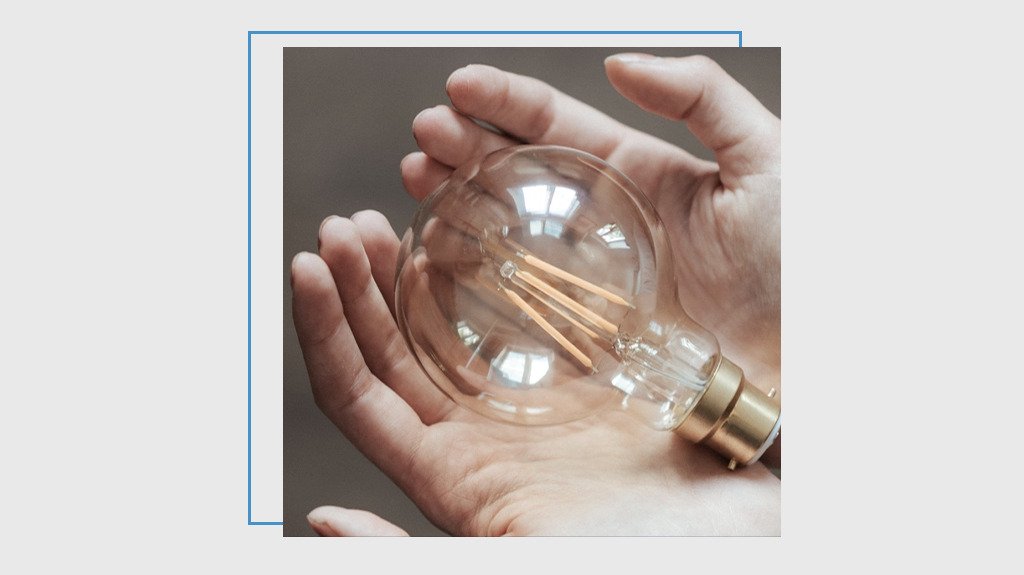
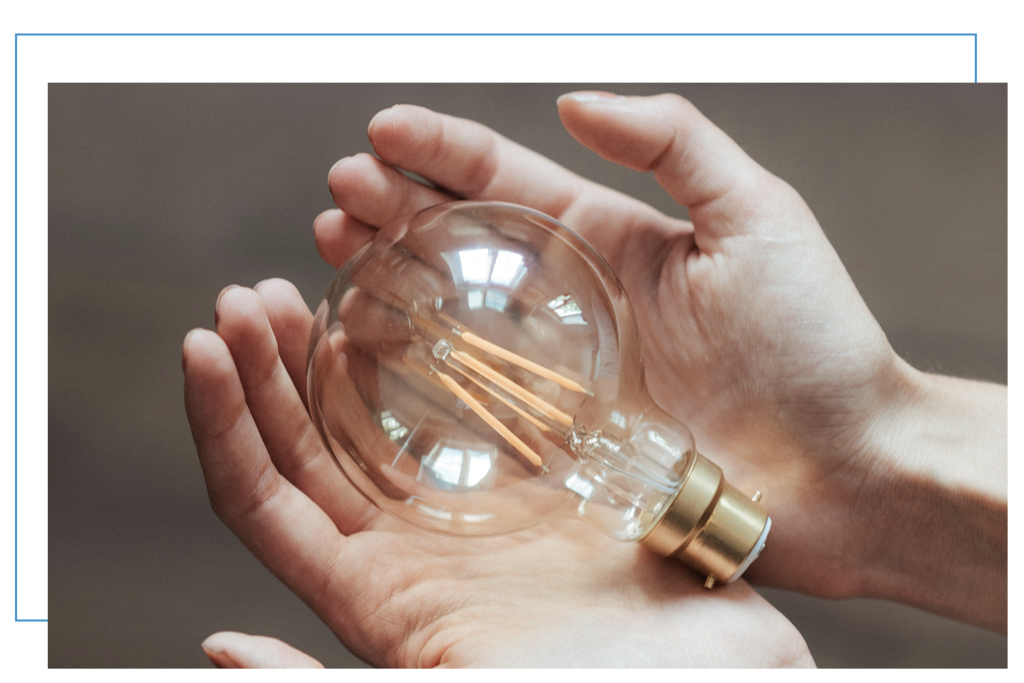




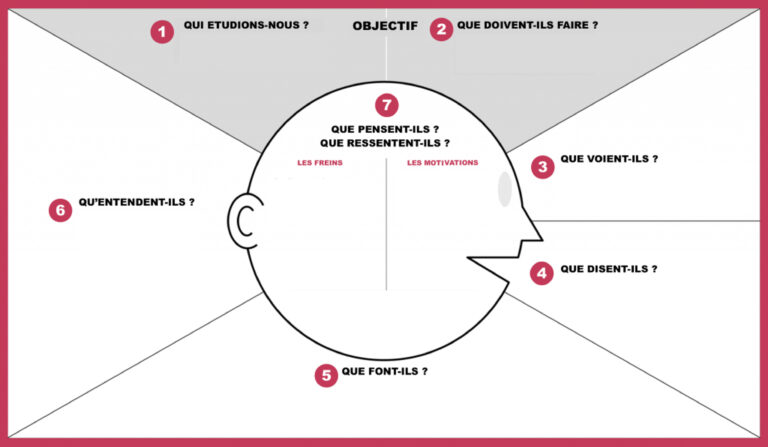
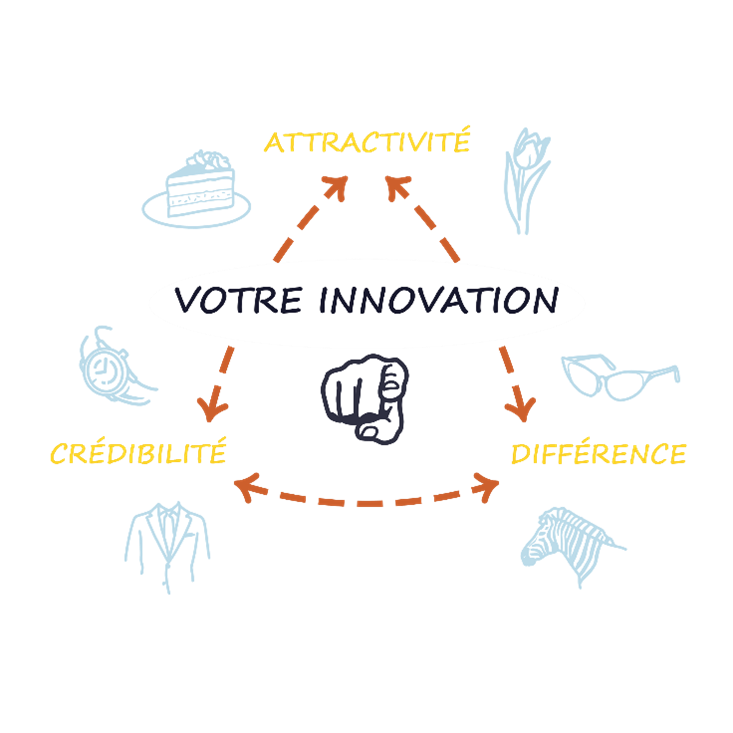




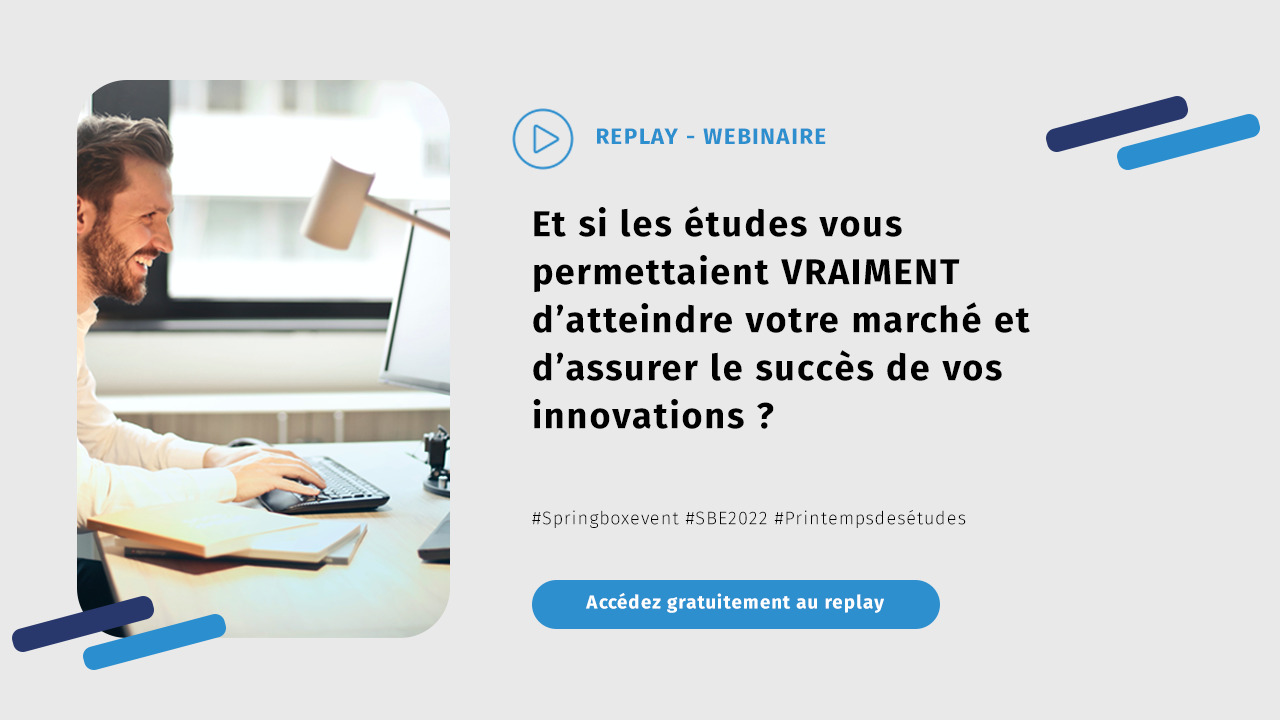


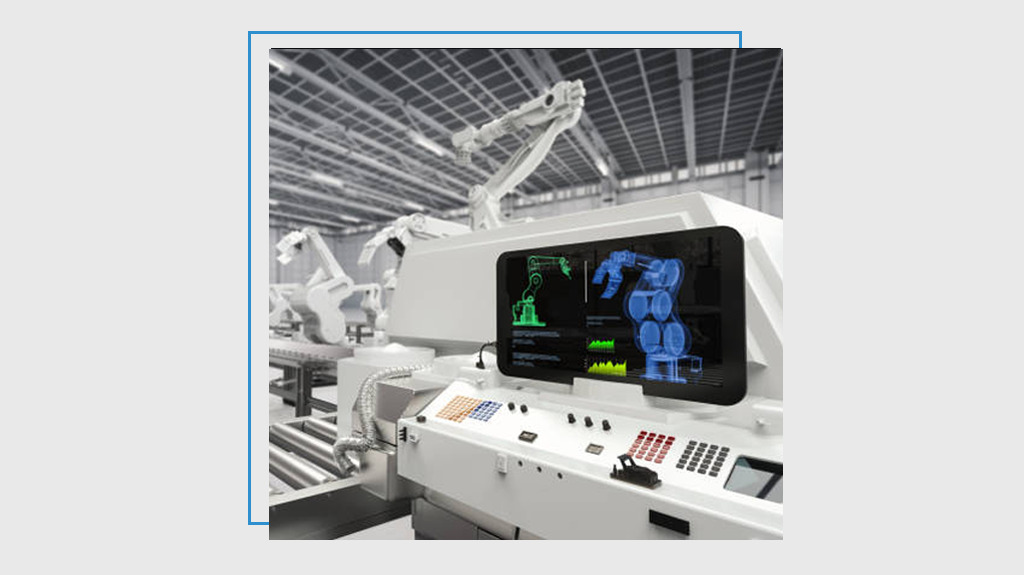
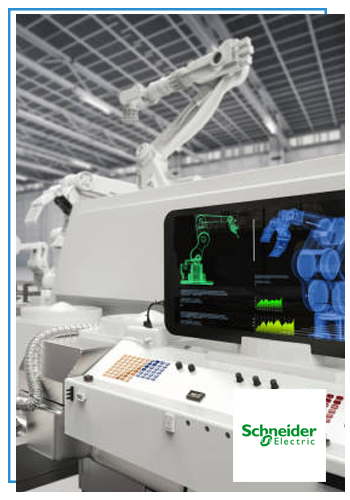
![RyM – NOS SERVICES EN HISTOIRE [EPISODE 3]](https://www.reach-your-market.com/wp-content/uploads/2022/06/histoire-3.png)
